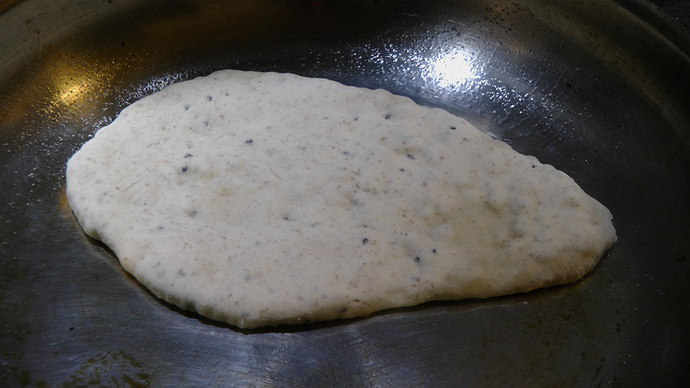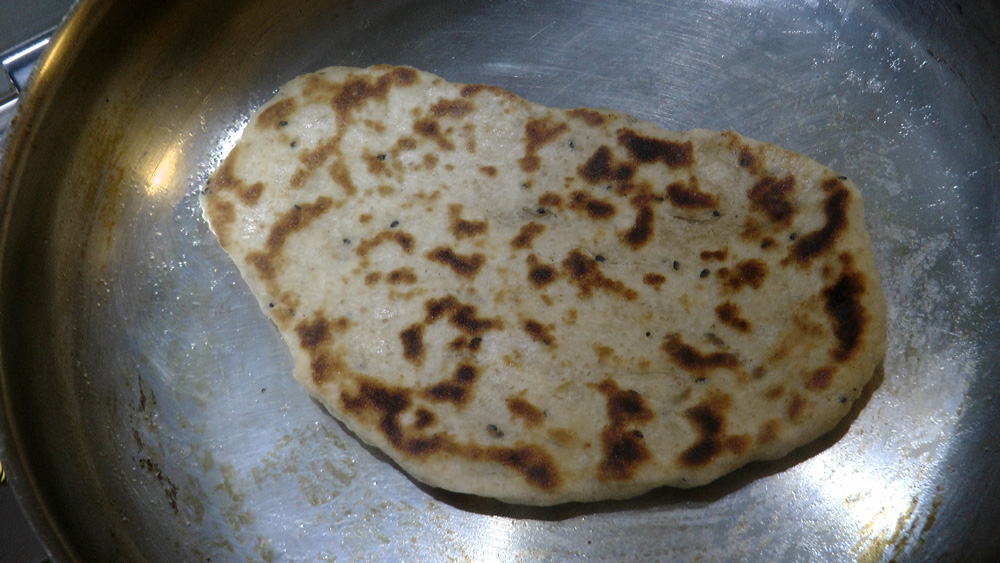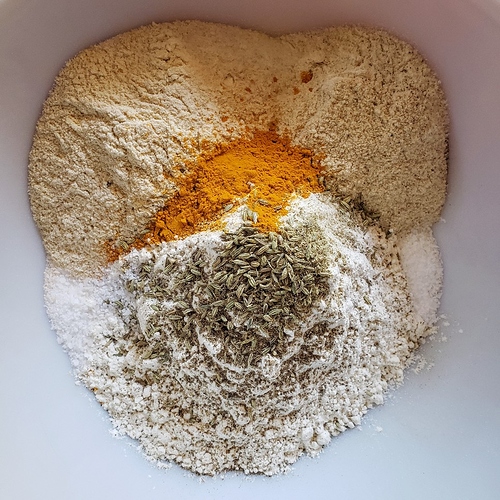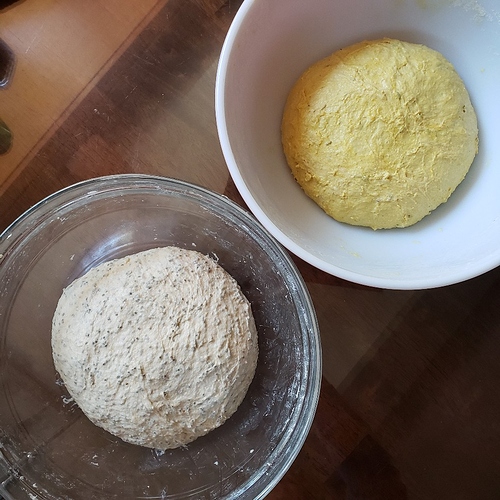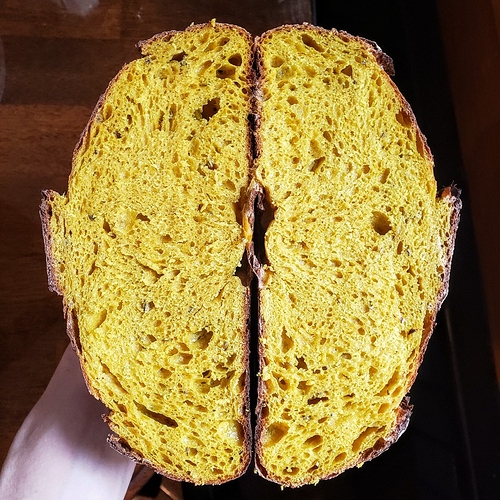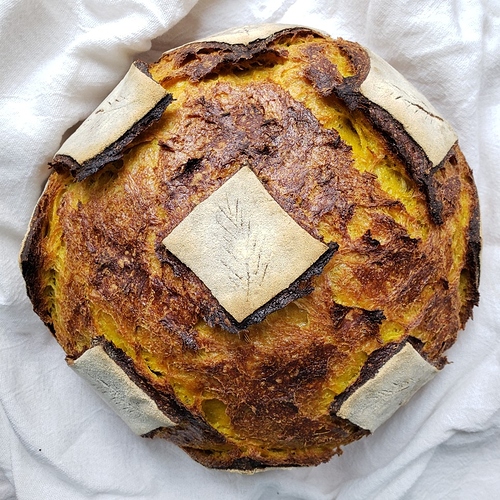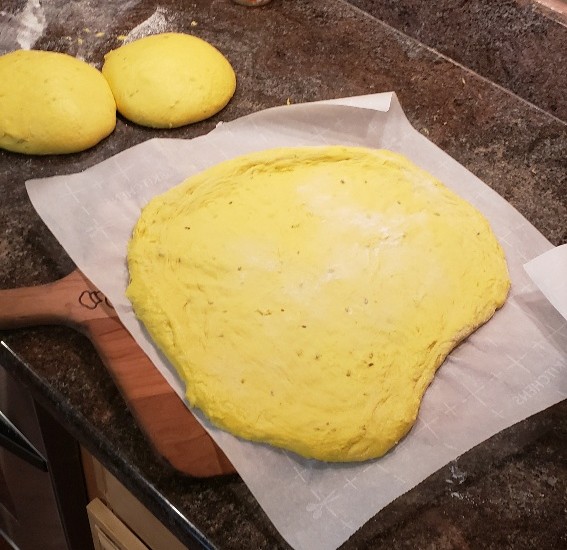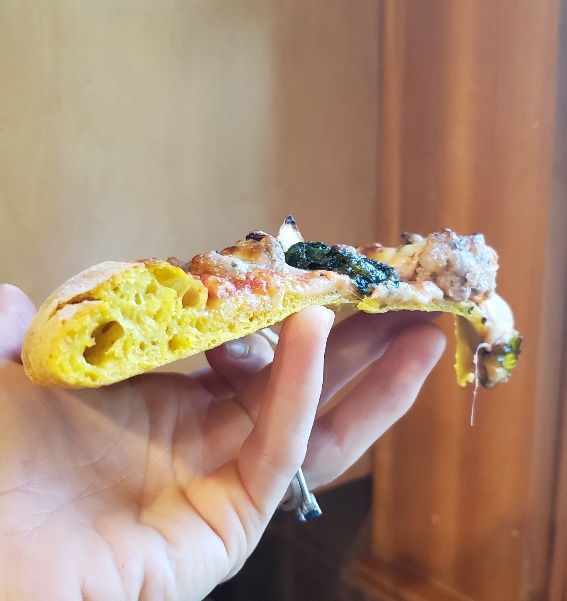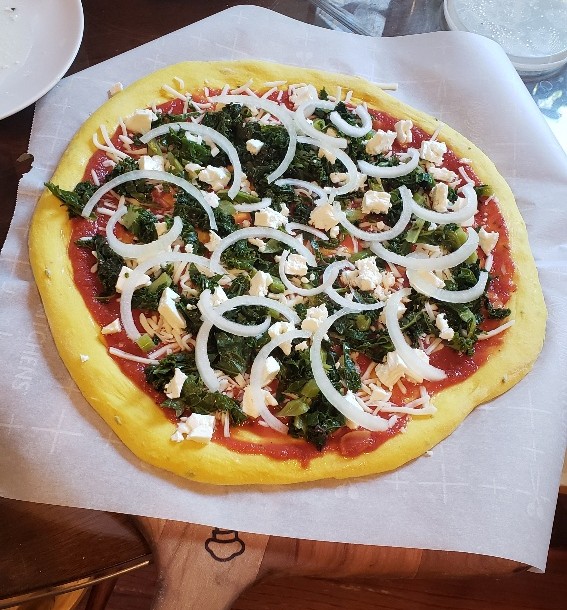It looks beautiful and I bet it tasted great. I must give this a try when cooking Indian again; it should go well with a tomato based curry then, I think, after what you mentioned about the tomato sauce. And it´s something different to the flat bread I usually make too. Thanks for sharing!
You’re welcome ~ good plan to pair it with a tomato based curry. I love Indian food and flatbreads too. Lately I’ve been making sourdough naan and eating it with things like black bean soup and taco fixings. It’s definitely rewarding to mix it up.
Sourdough naan is just the best! Tried that too, haha. Lovely tender taste it has. (with grilled chicken, pickles and a potato/spinach/curd curry on the last pic btw)
That looks amazing! It’s making me hungry 
I can’t believe how long it took me to make this bread again because it is such a hit with my family. I’m now commited to making a pizza dough with this flavor combination!
I looked up this thread to remind myself of the fennel and turmeric quantities, so I figured I’d add my latest photos and formula here.
This batch was similar to the one above but with less water, some honey, and different mix of flours.
350g all purpose flour
150g whole grain kamut flour
340g water
100g starter
1 Tbsp honey
1 Tbsp semi-crushed fennel seeds
2 tsp ground turmeric
2 tsp salt
As promised, I made pizza with these flavors. It was so soooo good. Fennel seeds add a tiny sweetness that pairs well with salty sausage and cheese, tangy marinara…etc. I’m not sure how to describe the turmeric element except that it’s delicious and it works.
I did drop the fennel seed and turmeric by a bit, compared to the bread.
Here’s my formula in weight and baker’s percentage:
450g all purpose flour (plus more for kneading)
300g semolina flour
500g water
150g starter
1.5 Tbsp EVO (21 grams)
2.75 tsp salt (16 grams)
2 tsp fennel seed, crushed with mortar and pestle (4 grams)
2 tsp ground turmeric (4 grams)
100% flour (blend types as you prefer)
66% water
20% starter
2.8% EVO
2.2% salt
0.5% ground turmeric
0.5% crushed fennel seeds
Photos of the process and the pizzas (3 large pies):
Melissa, could you provide info for this recipe in terms of bulk fermentation, folds, basic technique etc, maybe even baking time. Thanks
Sure!
So my process has been essentially what I outline in this recipe blog post, minus the autolyse, which I haven’t been doing much these days. Also note that kitchen temp will impact rise times. When my house is in the high 60s, this dough might need 7-8 hours to bulk ferment. In the high 70s, I’m looking at 5-6 hours. If I use half the amount of starter, I can get a leisurely overnight bulk fermentation.
I’ve also been varying the amount of gluten development I do depending on my availability to tend to the dough. I didn’t laminate my recent version of this bread, for example. In this blog post under Gluten Development Tips, I describe some ways to get strength in the dough at different times in the process.
(If you meant the pizza recipe process  that info can be found here)
that info can be found here)
Thanks Melissa! I usually use the oblong cloche, and needed temperature and times for baking the loaf. Thanks, Gary
P.S. I really enjoy your posts. I am no where near your level of expertise but still get very useful tips from you.
Could I use fresh Turmeric? If so, How much?
Who cannot be tempted with pizza liken that?
@Snowywin Glad you’re enjoying the posts. You can use those bake times/temps for the oblong cloche. (It’s a cast iron pan, like the Challenger bread pan, that I might say to drop the temperature to 450F as soon as you load the bread.)
@seppaloha I’ve never worked with fresh turmeric aside from grated into a stir fry. I’m sorry I don’t know how much how to use in this dough. If you give it a go, I’d love to hear about your experience.
@anon44372566 Thanks 
Hello,
Thanks for this nice recipe with turmeric I love this stuff. One question what is EVO in this recipe?
Regards
Jan
Extra Virgin Oil?
Yes, extra virgin olive oil – thanks!
Melissa, Two topics for you to address:
- Do you have a certain percent hydration in mind when you develop or work with any recipe? How would you calculate the percent hydration when using starter? I know that I feed my starter with 50% water and flour by weight, but over time my colony gets thin and I sometimes just add flour to thicken it, but not quite as thick as the 50/50 mixture that I feed it. So the percent hydration of the starter is always different. Also how do you adjust the hydration percentage when using honey, barley malt syrup or oil as a wet ingredients.
- What dough properties determine when you should stop your bulk fermentation, or is it just a doubling of the dough volume?
Gene Fioretti
Hi Gene,
Good questions – no simple answers unfortunately. Target hydration depends on the desired dough feel and the desired outcome…e.g. you don’t want a wet challah dough that you need to braid, but you do want a wet ciabatta dough that is shaped very simply and is meant to be airy.
The amount of whole grain flour in the dough, type of wheat flour, and seeds and berries will impact how much water is needed to get a particular “feel.”
Some rough targets I tend to hit on artisan-style breads are:
refined flour: low to mid-70s
under 50% whole grain flour: mid-70s-low 80s
up to 100% whole grain flour: 80s-100% depending on the wheat variety
Soft wheats can be as low absorbency as refined flour.
I can’t really speak to your starter feeding protocol, only to say that if it works well for you, then it’s perfect. When using a thick starter in a recipe calling for 100% hydration starter, you can use a little more water.
Most recipes with additional wet ingredients calculate them separately from the water e.g. pizza has olive oil and it gets its own line in the baker’s percentage table.
The bulk is stopped when the dough has expanded and become webby. For some dough, doubling works, and for others, that may be too much. How much you handle the dough can also mask doubling, which I explain a bit here.
It’s also important to factor in what kind of final proof you are planning. I tend to bulk far and final proof less. This is just habit. Other people have fantastic outcomes with a different approach: bulk less, final proof more aggressively.
I hope this helps and that other people in the Breadtopia community share their hydration and bulk fermentation strategies.
Melissa, that pizza with fennel/turmeric looks absolutely phenomenal!..making the crust this week.
~ Patricia
Awesome, I hope you enjoy it.
Hello Melissa,
Pls clarify the photo showing two bowls of dough…one with turmeric and one without?
The turmeric-fennel pizza crust is still on my docket, but it’s close to really happening! 
As always, thanks for your superb recipes, photos, and wonderful posts; I really enjoy your breadmaking!
~ Patricia


